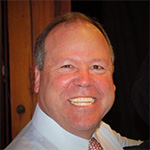Instructional Design is much like composing a painting. It starts with a need to create... in art that need may be generated from within. In instructional design, that need comes at the request of your client.
Once you have the need (the request), you begin to visualize the composition and select the medium for expressing your composition. Before you make that selection, you must consider the audience and the manner in which your composition will be displayed. More importantly, you explore the question, “will it make a difference?” In instructional design, this involves analysis. Analysis frames the composition. It allows you to explore how to compose to ensure that there is a return on the investment of time and effort.
However, unlike the painter, the instructional designer’s work is not complete when the paint dries and the painting is hung on the wall. As you present the composition, you must evaluate the audience’s reaction… did they see what you were attempting to communicate… did they learn… did their performance improve? You must continue to observe your audience and be able to provide your client with a measurable result. And finally, you must be willing to make changes to your composition to better engage your audience, to improve the results, and to create the masterpiece that fulfills the client’s request.



